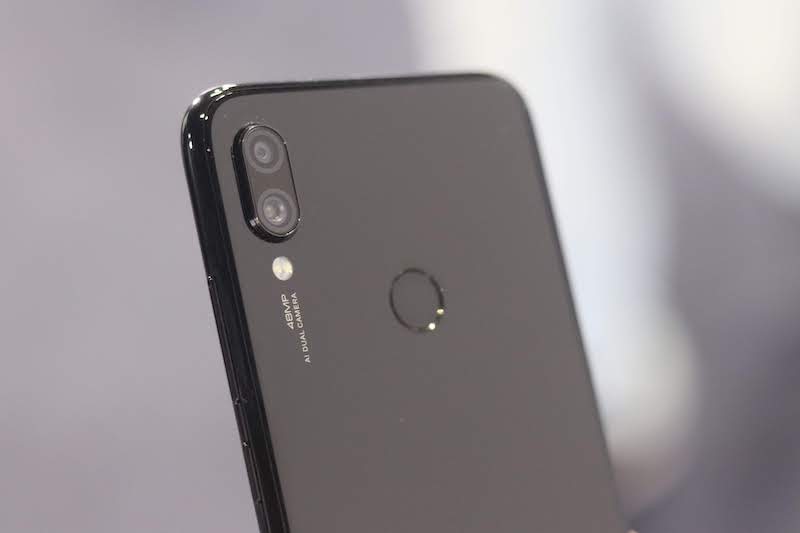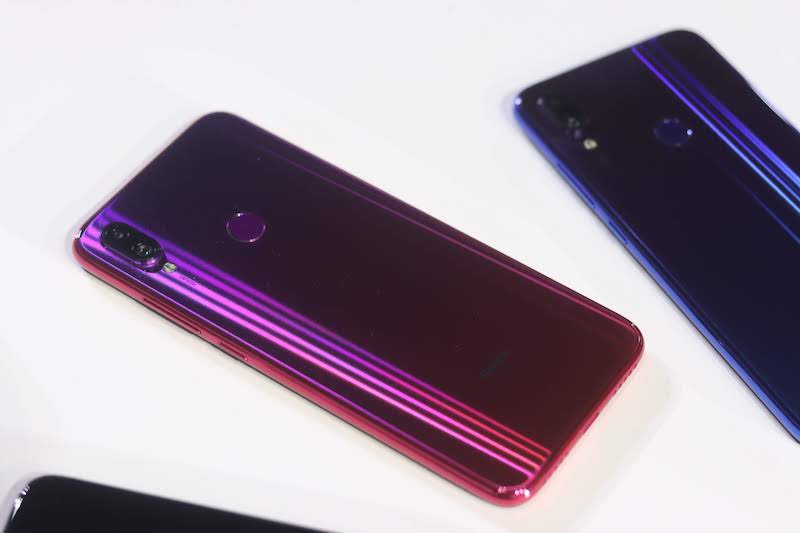At the start of 2019, some reports emerged online stated that Xiaomi will be more aggressive with its pricing strategy this year to tackle the competition better. Xiaomi always used to price their devices aggressively, but in 2018, there were some devices like the Redmi Y2 and Redmi 6 Pro which disappointed consumers in terms of pricing. Just when everyone thought that Xiaomi would not get any more aggressive in the Indian market, out came the Poco F1 which is still the best smartphone under Rs 20,000. But Poco is Xiaomi' newly established sub-brand and everyone expected the price of Poco F1 would be aggressive. On February 28, Xiaomi launched two Redmi Note phones in India and the Chinese company blew everyone with the pricing of both the phones. The phones in question are Redmi Note 7 and Redmi Note 7 Pro. Right after the Note 7 series announcement, Asus reduced the price of its three-month-old Zenfone Max Pro M2 by a massive margin.

The Redmi Note series from Xiaomi always offered incredible performance at a pocket-friendly price. Since the first Redmi Note 4G launch in India, Xiaomi kept the pricing of the base model at Rs 9,999, and it continues this year as well. The standard Redmi Note 7 starts at Rs 9,999, and for the users who're looking for an even more powerful smartphone, we have the Redmi Note 7 Pro that ticks almost every box on paper.
The Redmi Note 7 Pro is a major upgrade over the Redmi Note 6 Pro that was launched in November 2018 in India. It sports a different design compared to what we've seen with Xiaomi devices in the past, offers the powerful Snapdragon 675 Mobile Platform, up to 128GB of internal storage, 48MP rear camera and a 4000mAh battery. The price of the Redmi Note 7 Pro's base variant is set as Rs 13,999 which is incredible for a phone with such specifications. Read on to find more about the Redmi Note 7 Pro in detail.
Xiaomi Redmi Note 7 Pro First Impressions: Design and Display
Xiaomi is never known for launching smartphones with a flashy design like those of Honor and Huawei phones. However, that's changing with the Redmi Note 7 Pro; The phone sports a glass back with Corning Gorilla Glass 5 protection. The leading smartphone brand in India has used a polycarbonate frame which runs around the edges of the phone. The Note 7 Pro comes in three colour variants- Nebula Red, Neptune Blue and Space Black; Besides the Space Black variant, the other two colour options has a gradient back, meaning colours on the rear panel vary with angles. If you've seen the Honor phones which launched recently, then the design of the Note 7 Pro will seem familiar to you.

Thanks to the glass back, the Note 7 Pro feels a bit heavy when taken into hands, but again, Xiaomi has distributed the weight evenly and the curved edges make up for an excellent in-hand feel. Lastly, we have the button placements which haven't seen any change compared to the predecessors; To the right, we have the power button and volume rockers, at the top we have the IR Blaster and 3.5mm headphone jack, and on the left, Xiaomi has added the SIM card tray which accepts dual nano-SIM cards or a nano-SIM card and a microSD card.
For the first time on a Redmi Note device, Xiaomi has used a USB Type-C port. Yes, the Redmi Note 7 and Note 7 Pro comes with USB Type-C port located on the bottom flanked on either side by speaker grilles.

Moving onto the display, the Note 7 Pro rocks a 6.3-inch Full HD+ LTPS In-Cell display with an aspect ratio of 19.5:9 and a resolution of 1080x2340 pixels. There's a Dot Notch on top of the display- again a first on a Redmi Note smartphone and a noticeable chin is also present. Initial impressions are the display on the Note 7 Pro seems way better than what we've seen on the Redmi Note 6 Pro and Note 5 Pro smartphones that were released last year.
Xiaomi Redmi Note 7 Pro First Impressions: Hardware and Software
Last year with the Redmi Note 5 Pro, Xiaomi debuted the Qualcomm Snapdragon 636 SoC, and this year, it's bringing the Qualcomm Snapdragon 675 SoC to under Rs 15,000 price point with the Note 7 Pro. We've seen the Snapdragon 675 Mobile Platform earlier on the Vivo V15 Pro and it performs slightly better than the Snapdragon 710 SoC which the Nokia 8.1 uses. Paired with the chipset is 4GB/6GB of RAM and 64GB/128GB of internal storage. There's a hybrid microSD card slot for storage expansion up to 256GB. The phone runs MIUI 10 based on Android 9 Pie out of the box.
The Note 7 Pro performed extremely well during our three-day usage and what surprised me is memory management. Xiaomi's MIUI is known for aggressive memory management in favour of battery life, but that seems to be not the case with the Note 7 Pro as the phone had more than eight apps in memory. Do make a note that I have the 4GB+64GB variant of Note 7 Pro. Like the older Redmi Note phones, the Note 7 Pro also rocks a 4000mAh battery and it has support for Qualcomm Quick Charge 4+ technology. Inside the retail box, Xiaomi is bundling a 10W charger which is also a welcome change.

The fingerprint scanner on the Note 7 Pro is present on the rear side and it gets the job done. MIUI 10 also offers a software-based Face Unlock and it has seen a minor speed improvement too.
As for the connectivity options, the Note 7 Pro has support for Wi-Fi 802.11 ac, Bluetooth 5.0, GPS and USB Type-C port. It also offers Dual 4G functionality to use two 4G SIM cards simultaneously. There's a lot of confusion regarding the Carrier Aggregation support on the Note 7 Pro; Yes, the phone supports CA and I have noticed the same on Airtel 4G (4G+) network in Hyderabad, but the actual configuration is not known at the moment.
Xiaomi Redmi Note 7 Pro First Impressions: Cameras
Now, let's address the elephant of the room and what Xiaomi is teasing a lot about the Note 7 Pro. The Xiaomi Redmi Note 7 Pro packs a 48MP Sony IMX586 sensor on the rear side. Do make a note that it's a true 48MP sensor from Sony and not the one which is present on the Redmi Note 7 Chinese variant. To recall, the Note 7 in China uses the Samsung GM1 sensor which is also present on the Vivo V15 Pro which effectively is a 12MP sensor.

With the Sony IMX586 48MP sensor in place, the Redmi Note 7 Pro captures detailed shots which is something Xiaomi is again betting on. The primary sensor works in tandem with a 5MP depth sensor that collects bokeh information for portrait shots. By default, the Note 7 Pro captures images in 12MP mode, but you can easily switch to the 48MP mode inside the camera app.
The camera app also comes loaded with a lot of features including a Night mode that seems to work really well. The Note 7 Pro has support for 4K video recording at 30fps unlike the Note 6 Pro and Note 5 Pro smartphones. And to remove the hassle of shaky videos, Xiaomi has added Electronic Image Stabilisation support as well. On the front side, the Note 7 Pro has a 13MP shooter for selfies and video calls which is sort of a downgrade from the 20MP unit we saw on its predecessor. The front-facing camera also has a portrait mode and it works on AI.
I have captured some images using the Redmi Note 7 Pro and they look stunning, at least for the asking price. Take a look at the samples.
Xiaomi Redmi Note 7 Pro First Impressions: Conclusion
With the Xiaomi Redmi Note 7 Pro, the Chinese company is taking the Redmi Note legacy to a new level. All these years, the Redmi Note series stood as the best sub Rs 15,000 smartphone and there's no doubt the same will continue this year as well. At the same time, the Note 7 Pro bridges the gap between a flagship phone and a mid-range smartphone. For the unaware, the Snapdragon 675 Mobile Platform delivers the performance which is on par with the Snapdragon 835 chipset.
The Redmi Note 7 Pro price in India is Rs 13,999 for the 4GB+64GB variant and Rs 16,999 for the 6GB+128GB storage mode. The first sale of the device will be held on March 13 exclusively on Flipkart, Mi.com and Mi Home offline stores. Stay tuned for our full review of the Note 7 Pro dropping next week.
























